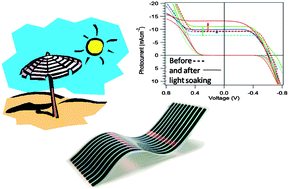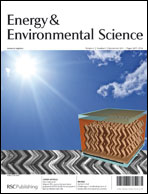The mechanism behind the beneficial effect of light soaking on injection efficiency and photocurrent in dye sensitized solar cells†
Abstract
Electrical and luminescence characterization was performed on 16

- This article is part of the themed collection: Solar energy

 Please wait while we load your content...
Please wait while we load your content...